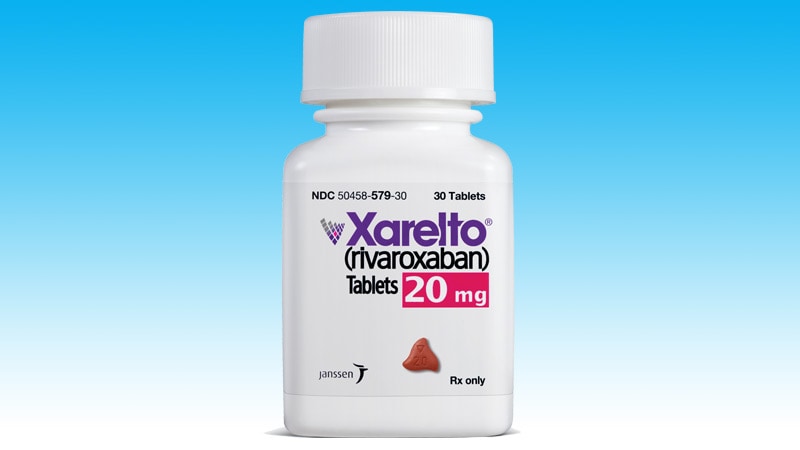
In steady clients hospitalized with COVID-19 and raised D-dimer levels, healing anticoagulation with rivaroxaban 20 mg daily did not enhance scientific results however did increase bleeding compared to in-hospital prophylactic anticoagulation in the ACTION trial.
The trial likewise meant to evaluate a restorative routine of enoxaparin (1 mg/kg two times daily) in unsteady clients however did not consist of enough of these clients for significant outcomes.
The ACTION trial existed by Renato Lopes, MD, teacher of medication at Duke University Medical Center, Durham, North Carolina, May 16 at the virtual American College of Cardiology (ACC) 2021 Scientific Sessions.

Dr Renato Lopes
Lopes described that rivaroxaban is an extensively utilized and effective anticoagulant for clients with atrial fibrillation, deep venous apoplexy (DVT), and lung embolism (PE). It is likewise being utilized in some centers to attempt and avoid thromboembolic occasions in COVID-19 clients, however there are no information on the maximum dose or period of treatment for this circumstance.
” An oral drug would be extremely appealing in reasonably ill clients as there is a hypothesis that the swelling and prothrombotic state continues after medical facility discharge,” he stated.
” The ACTION trial was powered to reveal supremacy of rivaroxaban 20 mg over prophylactic anticoagulation, however our outcomes really trended in the other instructions. There was a modest decrease in thromboembolic occasions with rivaroxaban, there was likewise a nonsignificant boost in death and a really noticable boost in bleeding. The compromise is not beneficial,” Lopes informed theheart.org|Medscape Cardiology.
.
The outcomes of this trial contrast with a big United States program of trials that has actually just recently been reported to reveal an advantage of full-dose anticoagulation with heparin vs prophylactic anticoagulation in reasonably ill COVID-19 clients.
Top-line outcomes from a global platform of 3 connected scientific trials– REMAP-CAP, ACTIV-4, and ATTACC— were revealed in January and stated to reveal that a complete healing dosage of heparin transcended to low prophylactic dosages for the main endpoint of requirement for ventilation or other organ encouraging interventions at 21 days after randomization. These trials have actually not yet been released and security outcomes have actually not yet been reported, besides to state the risk-benefit agreed with to full-dose heparin.
Earlier arise from the very same platform of 3 trials had actually revealed no advantage however an increased bleeding rate in seriously ill COVID clients, and these clients had actually stopped being registered in the research studies.
Asked how the general information from all the trials readily available ought to be translated, Lopes stated the ACTION trials and the worldwide platform of trials were really various and must not be straight compared.
” We checked rivaroxaban; they utilized heparin as the healing technique. They took a look at in-hospital results; we had 30- day results as our endpoint,” Lopes kept in mind.
” I believe we require for the trials to be released so we can translate the information completely prior to making scientific suggestions,” he included. “There are likewise lots of other trials presently underway and arises from all of them ought to be offered in the next couple of months. We will remain in a better position to understand what to do then.”
” In the meantime,” he stated, “we can state that based upon ACTION, that we need to not be utilizing rivaroxaban at a dosage of 20 mg daily for thrombotic prophylaxis in steady COVID-19 clients who do not have another sign for anticoagulation such as DVT or PE.”
The ACTION trial was carried out in Brazil to examine whether a method of healing anticoagulation mainly with rivaroxaban works in avoiding problems in clients hospitalized with COVID-19 and raised D-dimer levels compared to prophylactic anticoagulation.
The trial randomized 615 such clients to restorative anticoagulation or requirement of care in-hospital prophylactic anticoagulation, usually low dosage (40 mg) enoxaparin daily.
2 various restorative techniques were utilized for 2 various client groups. Steady clients got restorative anticoagulation with rivaroxaban 20 mg everyday and unsteady clients got in-hospital enoxaparin (1 mg/kg) two times daily.
Both groups got rivaroxaban 20 mg after healthcare facility discharge through to 30 days.
The main result was a hierarchical analysis of death, period of hospitalization, and period of oxygen usage through 30 days utilizing the “unequaled win ratio” approach.
Lopes discussed that this included comparing each client in the treatment group with each client in the control group for the 3 specific elements of the composite endpoint. For death, if the treatment client endures and the control client passes away, that is a win for the treatment. If the control client makes it through and treatment client passes away that is a win for the control. If the outcome is the very same, that is a tie.
The win ratio is computed by the variety of wins in the treatment group divided by the variety of wins in the control group. If the ratio is more than 1, then the treatment is advantageous.
Standard attributes of the clients registered revealed that more than 90%were categorized as steady, with around 75%requiring oxygen assistance; 90%were currently on anticoagulants (most on basic prophylaxis), 8%were taking antiplatelet medication, and 83%were on systemic corticosteroids.
Outcomes revealed that there were 34.8%wins in the healing method vs 41.3%in the prophylactic method, with 23.9%ties. This offered a win ratio of 0.86(95%CI, 0.59 – 1.22) for the restorative vs prophylactic method.
The very same patterns were seen for each private part of the composite main endpoint.
The restorative group revealed numerically lower rates of thromboembolic occasions (relative threat [RR], 0.75; 95%CI, 0.45 – 1.26), however likewise numerically greater rates of 30- day death (RR, 1.49; 95%CI, 0.90 – 2.46).
There was likewise a considerable boost in significant or scientifically pertinent bleeding in the restorative group (8.4%vs 2.3%), providing a RR of 3.64
Outcomes were comparable throughout all subgroups.
Among the Huge Concerns
.
Talking about the research study at the ACC session, Robert Harrington, MD, teacher of medication at Stanford University, California, stated the Brazilian trial had actually taken on among the huge concerns in COVID-19– the optimal dosage of anticoagulation to utilize– however it tackled it in a different way to the research studies that have actually been carried out in the United States, in attempting to attend to whether various techniques were required in steady and unsteady clients. He asked Lopes what the research study had actually revealed on this.
Lopes responded that the main goal was to check healing dosage of rivaroxaban, however they wished to enable the usage of heparin in unsteady clients. “It ends up that the huge bulk of clients were steady, and we truly didn’t have sufficient unsteady clients to respond to that concern,” he stated.
” Our trial ought to be focused mostly on steady clients on an oral drug, which’s what this trial contributes to the field,” Lopes specified.
Harrington concurred with Lopes’ analysis of the varying lead to this trial and the worldwide platform research studies.
” There were various routines utilized in the 2 trials. We need to stick to the information from the platform research studies on heparins in restorative dosages for reasonably ill clients,” he informed theheart.org|Medscape Cardiology.
.
On the “win ratio” method, Harrington described that this kind of analysis has actually been presented as method to deal with some constraints of the conventional “time-to-event” analysis, which just consists of the very first occasion that happens in the main analysis.
” In some cases this may not be the most essential occasion (for instance, MI instead of death; revascularization instead of MI),” he stated. “The ‘win ratio’ enables all the occasions to be analyzed and compared throughout the treatments.”
Harrington stated the ACTION private investigators ought to be provided “congratulations” for putting the win ratio approach into practice. “It is great to see this utilized in a genuine scientific trial.”
The ACTION trial was an academic-led research study moneyed by an unlimited research study grant from Bayer. Lopes reported research study grants from Amgen, Bristol-Myers Squibb, GlaxoSmithKline, Bayer, Medtronic, Pfizer, and Sanofi-Aventis, and financing for speaking with or instructional activities from Bayer, Boehringer Ingelheim, Bristol-Myers Squibb, Pfizer, Daiichi Sankyo, and Portola.
.
American College of Cardiology (ACC) 2021 Scientific Session. Provided May 16, 2021.
For more from theheart.org|Medscape Cardiology, follow us on Twitter and Facebook
.
No comments:
Post a Comment